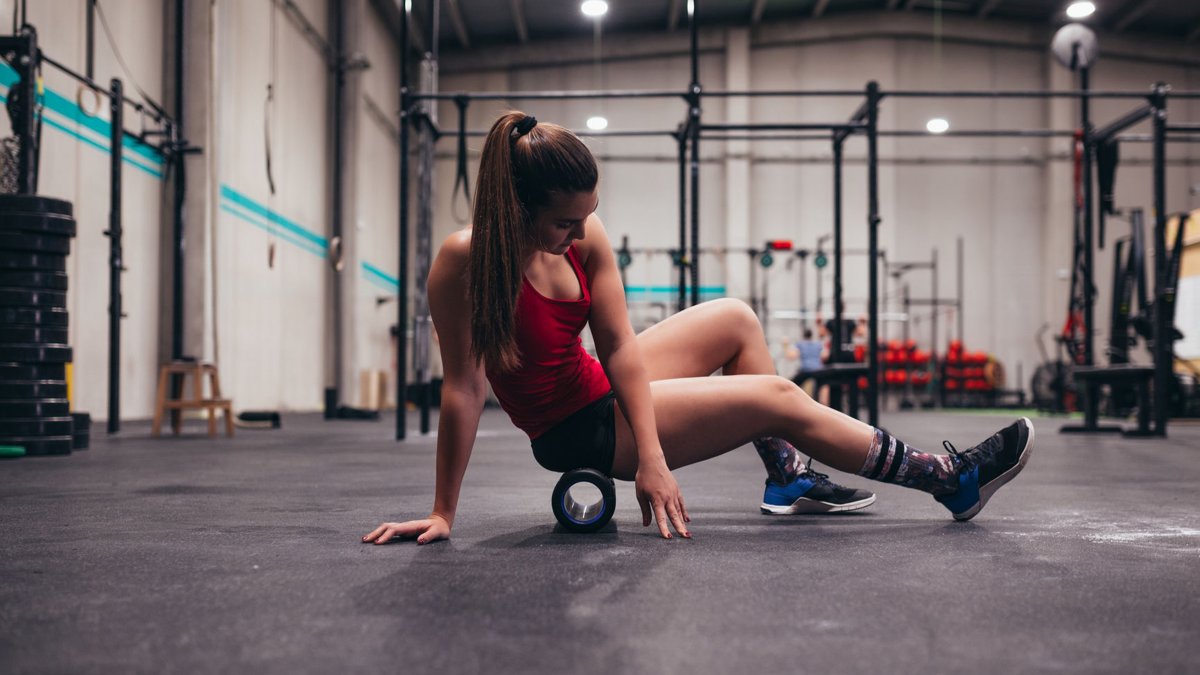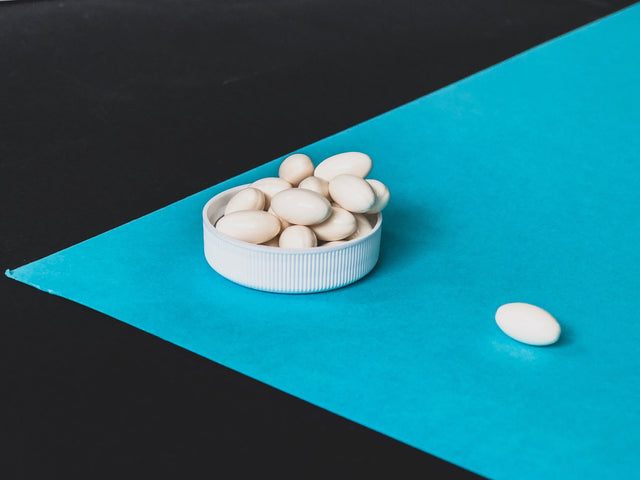It hurts so good. I’m talking of course, about foam rolling. You know, that studded little power strip of foam. Or as I like to call it, the pain enforcer. Foam rollers are used to assist in myofascial release, after a grueling WOD, long distance run, or gripping power lifting session. The reason we foam roll, or neglect to foam roll, is to not only make us cringe, but to both help you warm up and recover faster after a gut-wrenching workout. So what are we going to do? By now, you probably know that Swolverine is an evidence-based company. So, let’s see what the studies say about the proper uses and benefits of foam rolling to help us get back out on the floor to hammer out more thrusters.
What Are The Benefits Of Foam Rolling?
To date, there are a limited amount of studies covering the performance benefits of foam rolling for athletes. But, the research that is available suggests that foam rolling does most of what it promises to do – namely helping you warm up before your workout and recover faster. A small study published in the Journal Of Athletic Training examined the effects of foam rolling as a muscle recovery tool after intense exercise protocol through assessment of pressure-pain threshold, sprint time, change-of-direction speed, power (broad-jump distance), and dynamic strength-endurance. The results suggested that foam rolling after a workout, is effective and reduced Delayed Onset Muscle Soreness (DOMS) and associated decrements in most dynamic performance measures [R]. Often times, severe soreness and in some cases debilitating pain is what impedes your training sessions.

A comprehensive and systematic review published in the International Journal of Sports Physical Therapy found that self-myofascial release with a foam-roller improved joint range of motion, enhanced post workout muscle recovery, and reduced the severity of DOMS [R,R]. With better range of motion and increased flexibility, you’ll be able to perform advanced Olympic movements such as snatch, push-jerk, and power cleans with more efficient and effective form.
Therefore the benefits of foam rolling apply to,
- Reduced Exercise Induced Muscle Soreness: Foam rolling the muscles increases blood flow and oxygen to the fascial tissue, promoting the natural healing process.
- Improve Flexibility: Foam rolling helps release adhesions and tension in your muscles, and therefore helps lengthen your muscle tissue.
- Reduced Stress: Often times, calcifications and adhesions can build from stress, which can negatively impact quality of life, sleep, and performance. By foam rolling and myofascial release, you can significantly reduce stress.
- Improved Range Of Motion (ROM): Foam rolling helps to stretch and lengthen muscles, so you have a better range of movement [R].
- Protecting Yourself From Injury Tight muscles can be more prone to injury, so self-release of muscles and fascia can help loosen everything up and increase your overall performance.
- Reduces Post-Workout Muscle Fatigue: With less fatigue, you’ll be able to increase training volume and performance [R, R].
How Does Foam Rolling Work?
Now that we know foam rolling is a great muscle recovery tool, how does foam rolling actually work? Foam rolling applies direct pressure to troublesome areas of stress or exercise induced adhesions or calcifications also called knots. These muscle knots can disrupt training and can make you more prone to injury. Self myo-fascial release, similar to getting a sports massage, can provide deep release of connective and soft fascia tissue, but without spending a hundred bucks per hour.
Using your own body weight, you can place any bothersome area on the cylindrical foam roller to release muscle knots, increase blood flow, enhance flexibility, increase range of motion, and reduce muscle soreness. Overall, the benefits of foam rolling are that it's a great way to help your recovery and improve athletic performance. Not to mention reduce stress.

But what the heck is fascia? And why does it need to be “released”? Fascia is a thin layer that surrounds and encases your muscle fiber, connective tissue, organs, and nerves within the human body. Fascia has many layers and helps your body push, pull, and perform every physical movement you decide to make. Sometimes though, these thin layers of fascia can form adhesions, or “knots” from them getting stuck or clumped together. These knots can form for a variety of reasons, and can cause muscle soreness, inflammation and pain.
Is Foam Rolling Good For Recovery? Takeaway
If you find that your muscles are tight after a grueling WOD or workout, grab a foam roller. Intense training can cause limited range of motion, severe mucle soreness, and muscle fatigue which can negatively affect your performance. Stick to your quads, glutes, hammies, traps and lats when you foam roll for a quick myofascial release and you’ll feel good as new.
Are your sore and achy muscles interrupting your training sessions?
SWOLVERINE is an endurance athlete and active lifestyle brand. Made for the elite athlete, and the strong-willed our products were designed to fuel your athletic performance. We perform when you perform.
We believe that everyone can optimize not only their athletic performance but their human potential. The way we believe we can optimize performance is through transparency, clinically effective doses, and clinically proven ingredients with evidence-based outcomes. We provide the nutrients you need to power your active lifestyle.
References
Pearcey, Gregory E P et al. “Foam rolling for delayed-onset muscle soreness and recovery of dynamic performance measures.” Journal of athletic training vol. 50,1 (2015): 5-13. doi:10.4085/1062-6050-50.1.01
Cheatham, Scott W et al. “THE EFFECTS OF SELF-MYOFASCIAL RELEASE USING A FOAM ROLL OR ROLLER MASSAGER ON JOINT RANGE OF MOTION, MUSCLE RECOVERY, AND PERFORMANCE: A SYSTEMATIC REVIEW.” International journal of sports physical therapy vol. 10,6 (2015): 827-38.
Wiewelhove, Thimo et al. “A Meta-Analysis of the Effects of Foam Rolling on Performance and Recovery.” Frontiers in physiology vol. 10 376. 9 Apr. 2019, doi:10.3389/fphys.2019.00376
Healey K. C., Hatfield D. L., Blanpied P., Dorfman L. R., Riebe D. (2014). The effects of myofascial release with foam rolling on performance. J. Strength Cond. Res. 28, 61–68. 10.1519/JSC.0b013e3182956569 [PubMed] [CrossRef] [Google Scholar]
Monteiro ER, Neto VG. EFFECT OF DIFFERENT FOAM ROLLING VOLUMES ON KNEE EXTENSION FATIGUE. Int J Sports Phys Ther. 2016;11(7):1076-1081.








